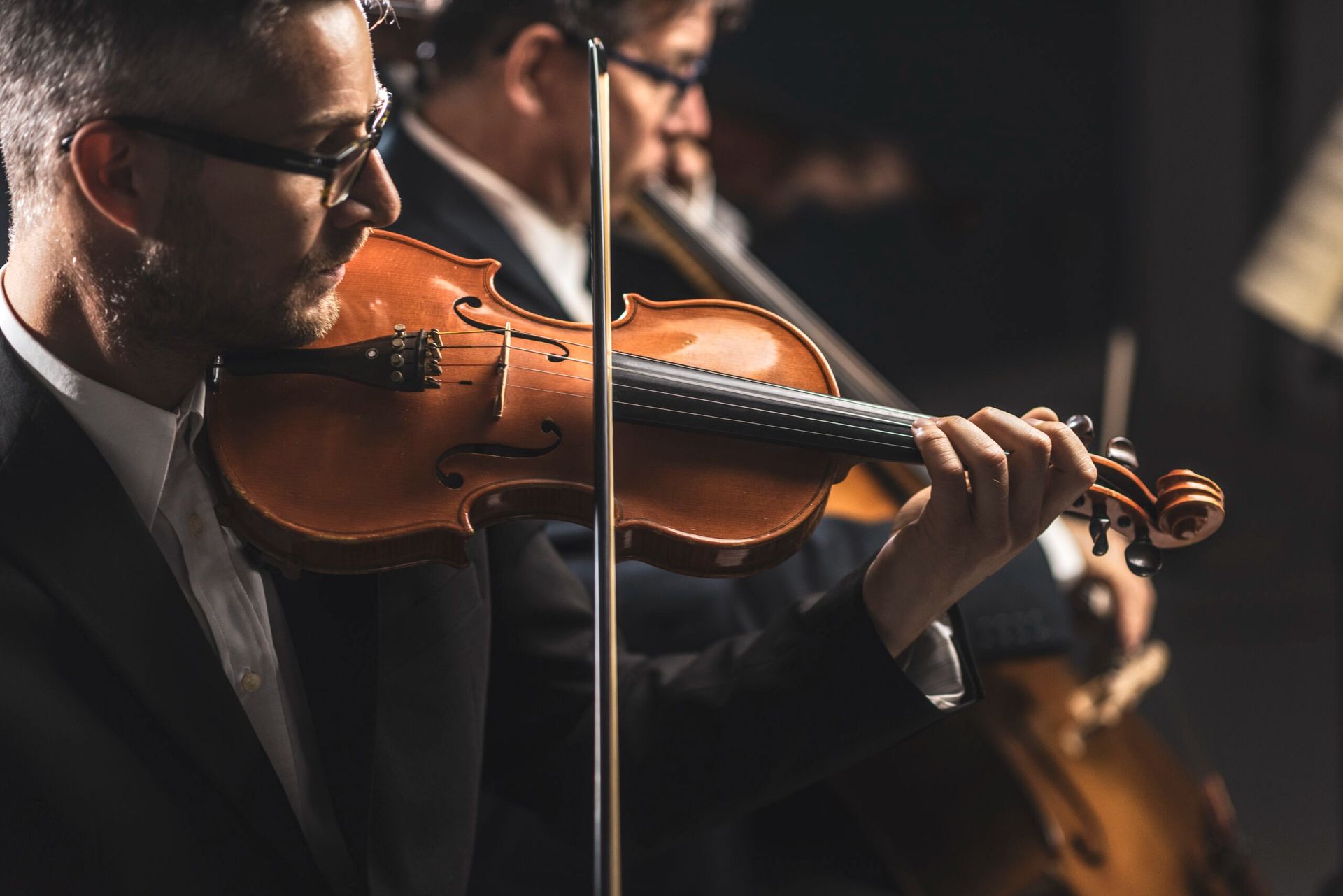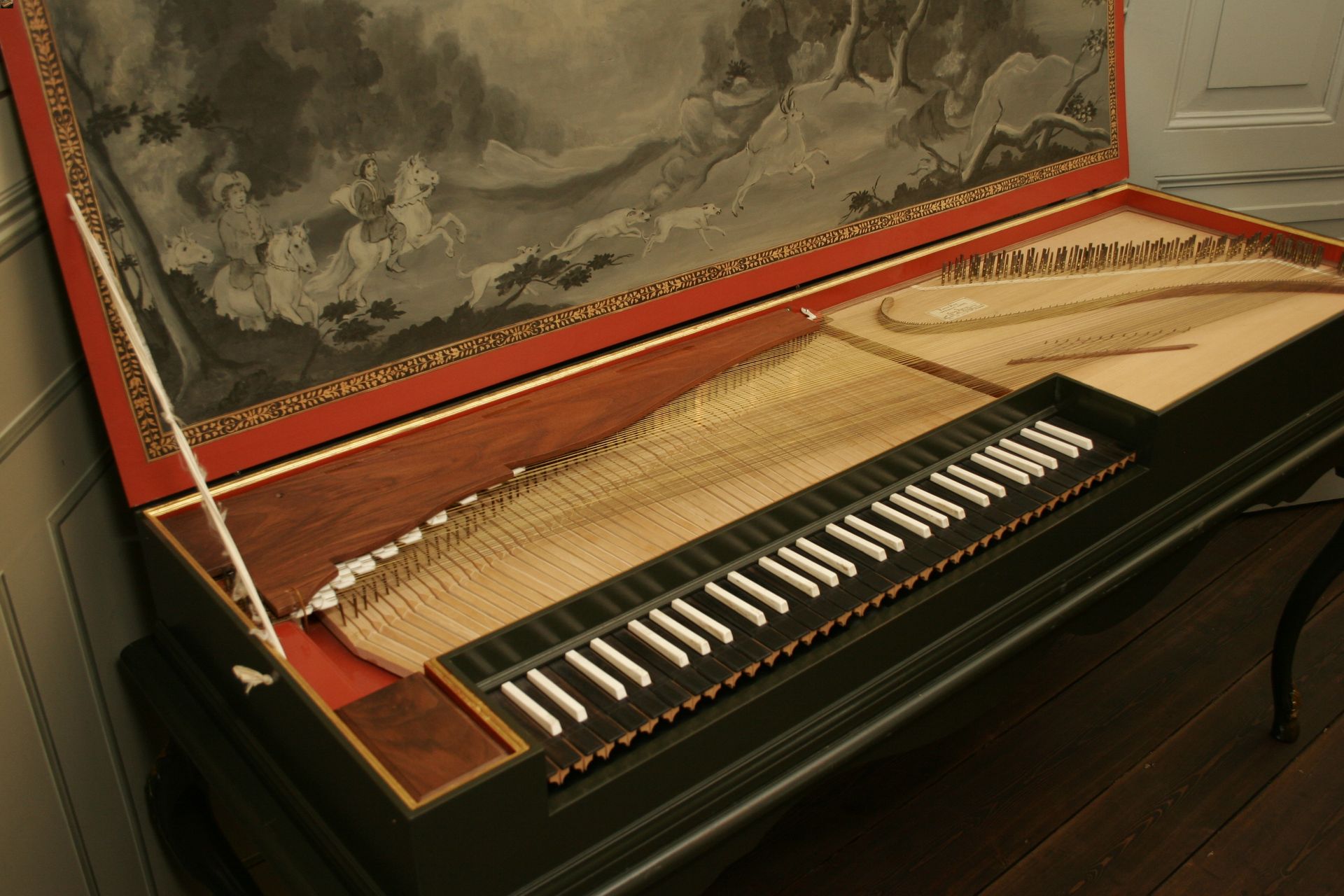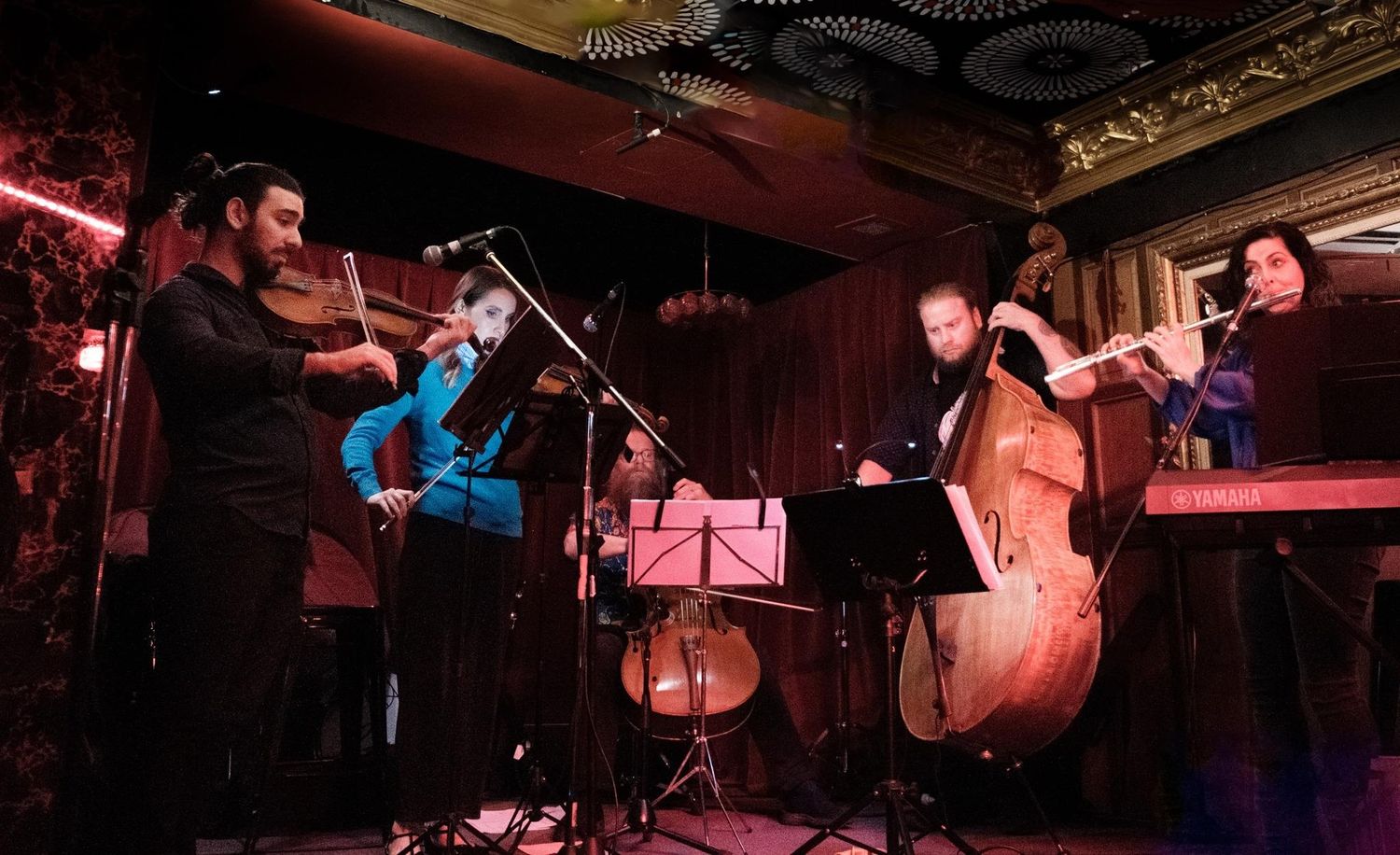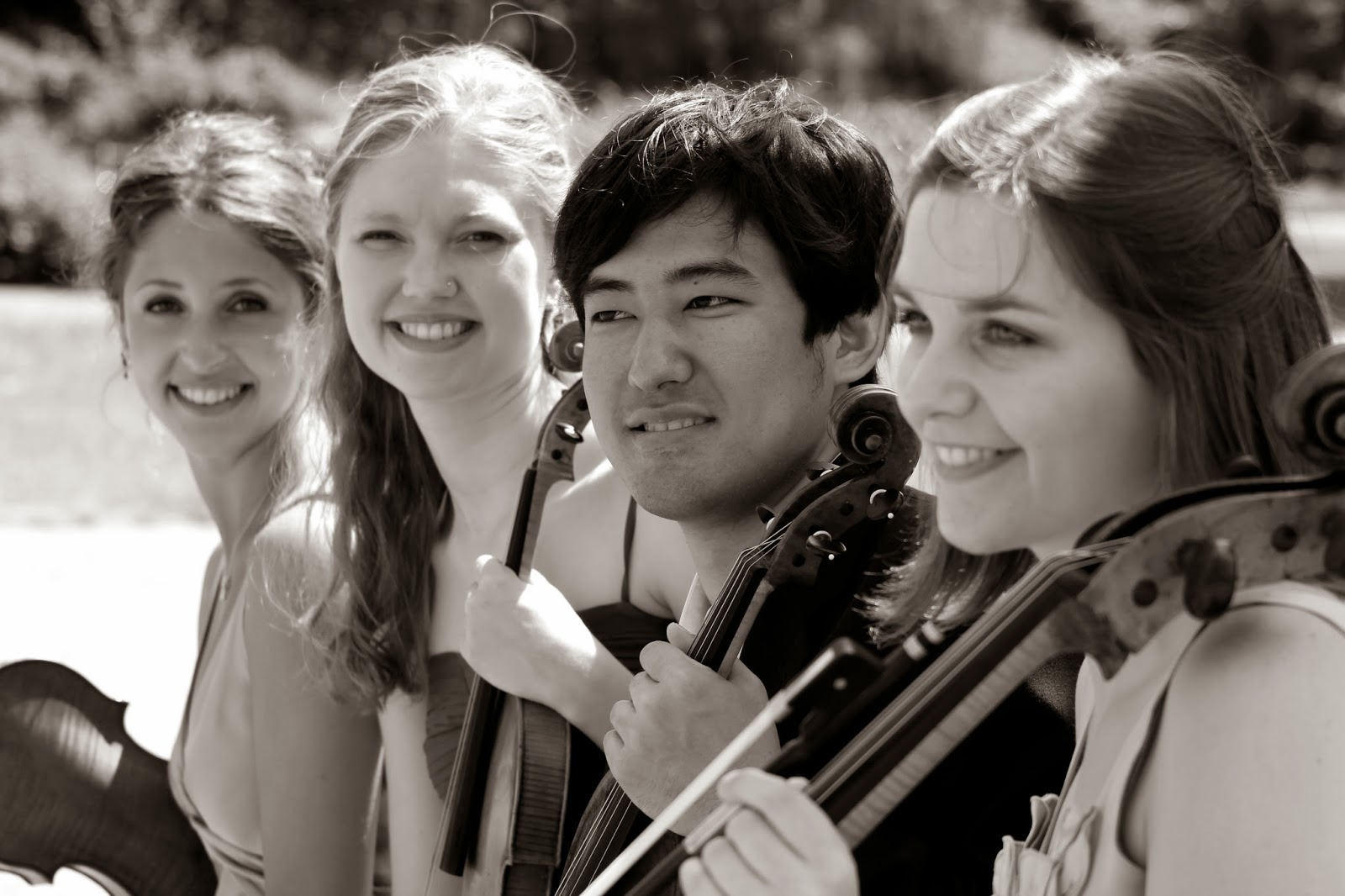Home>Events & Info>Chamber Music>What Distinguishes Chamber Music From Orchestral Music?
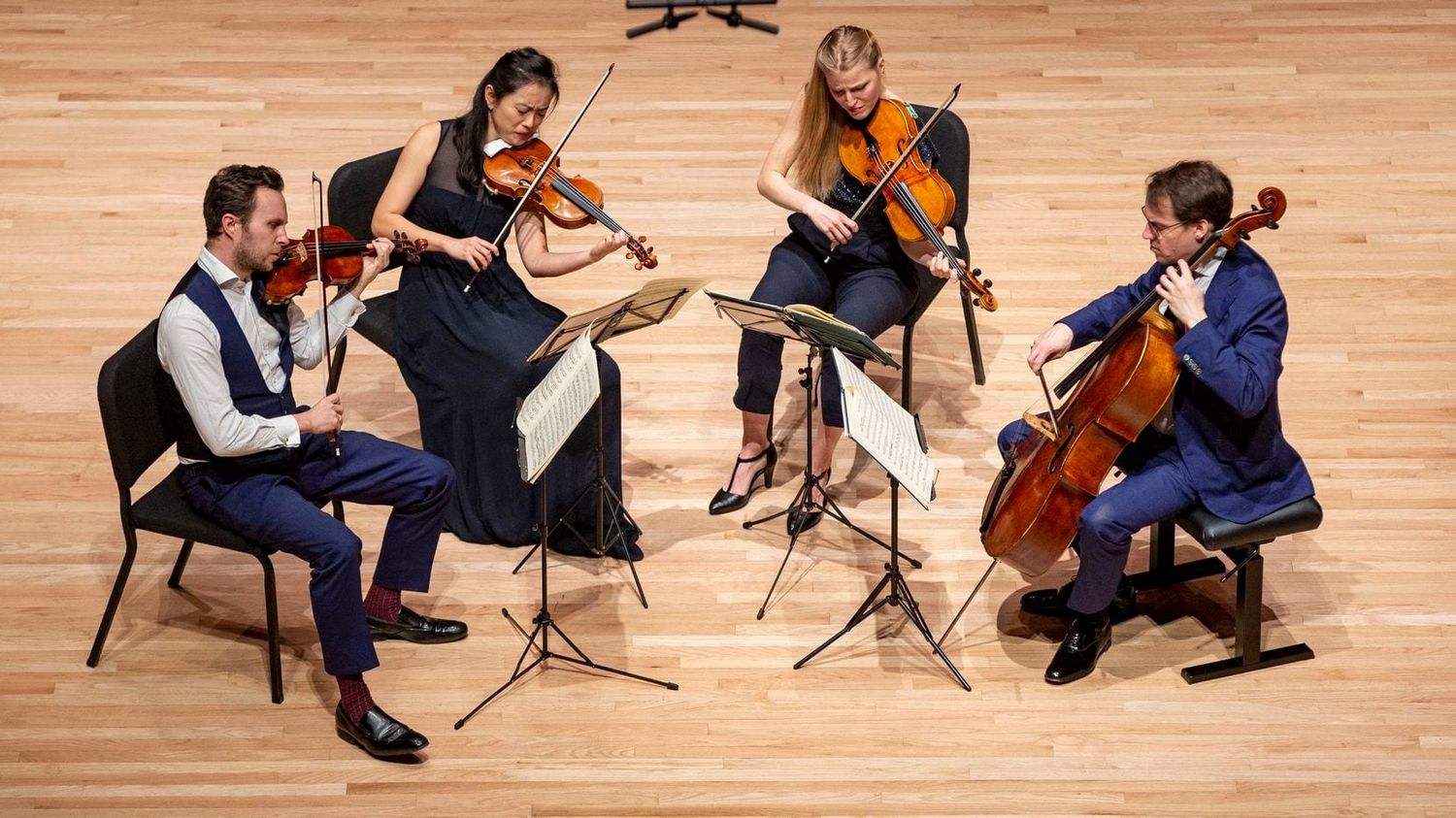

Chamber Music
What Distinguishes Chamber Music From Orchestral Music?
Modified: February 24, 2024
Discover the key differences between chamber music and orchestral music. Learn how the intimacy and complexity of chamber music sets it apart, in this informative guide.
(Many of the links in this article redirect to a specific reviewed product. Your purchase of these products through affiliate links helps to generate commission for AudioLover.com, at no extra cost. Learn more)
Table of Contents
Introduction
Chamber music and orchestral music are two distinct genres that have captivated audiences for centuries. While both involve the performance of classical compositions, they differ in various aspects, including instrumentation, number of performers, complexity, and performance setting. Understanding these differences is crucial for music enthusiasts and musicians alike.
Chamber music, as the name suggests, refers to a genre of classical music intended for a small ensemble of musicians. It is characterized by its intimate and refined nature, allowing for intricate musical interactions and a close connection between performers and listeners. In contrast, orchestral music involves a large ensemble, typically consisting of strings, woodwinds, brass, and percussion instruments. It is renowned for its grandeur and power, showcasing the full range and depth of the orchestra.
In this article, we will explore the distinctions between chamber music and orchestral music in detail, shedding light on their unique characteristics and the role they play in the world of classical music.
Definition of Chamber Music
Chamber music is a genre of classical music that originated in the 17th century. It is composed for a small group of performers, typically ranging from two to nine musicians, and is designed for performance in a small, intimate setting, such as a chamber or a salon. The term “chamber” itself refers to a room or a space where this type of music was historically performed, typically in aristocratic households.
One distinguishing characteristic of chamber music is its emphasis on the interaction and interplay between the individual musicians. Each instrument in the ensemble has its own unique role, contributing to the overall musical texture and creating a rich and layered sound. The absence of a conductor allows for a more democratic and collaborative approach, where the musicians closely listen to one another and respond in real-time, making chamber music performances highly dynamic and spontaneous.
The repertoire of chamber music encompasses a wide range of styles and forms, including sonatas, quartets, quintets, trios, and more. These compositions often highlight the virtuosity and technical prowess of the musicians, with intricate melodies, complex harmonies, and challenging passages.
Chamber music is known for its intimate nature, allowing performers to communicate with each other and with the audience on a more personal level. Due to the smaller ensemble size, every musical nuance and subtle interaction is more easily perceptible, creating an intimate atmosphere that intimately engages the listeners. The close proximity between the musicians and the audience fosters a sense of connection and involvement, making chamber music performances a deeply immersive experience.
Furthermore, chamber music has developed a rich tradition of ensemble playing and has given rise to numerous renowned chamber music ensembles and societies around the world. These groups specialize in performing and promoting this genre, showcasing the beauty and intricacy of chamber music compositions.
Overall, chamber music offers a unique musical experience that highlights the interplay between musicians, the complexity of the compositions, and the intimate connection between the performers and the audience. It continues to be revered for its artistic depth, sensitivity, and emotional resonance.
Definition of Orchestral Music
Orchestral music, also known as symphonic music, refers to a genre of classical music that is composed for and performed by a large ensemble called an orchestra. An orchestra consists of four main sections: strings, woodwinds, brass, and percussion. The combination of these sections allows for a rich and diverse range of sounds and textures that are characteristic of orchestral music.
Orchestral compositions are renowned for their grandeur, power, and complexity. They often feature expansive musical structures, multiple movements, and intricate orchestrations. Composers utilize the full potential of the orchestra, employing a wide range of instruments and techniques to create a symphonic experience that is both captivating and awe-inspiring.
One of the defining features of orchestral music is the presence of a conductor. The conductor serves as the leader of the orchestra, guiding the musicians through the performance, shaping the interpretation, and ensuring cohesive and synchronized playing. The conductor’s role is crucial in maintaining the unity and balance of the orchestra, allowing for the precise execution of the composer’s intentions.
Orchestral works often encompass a wide range of emotions and moods, from delicate and introspective passages to powerful and triumphant climaxes. They can transport the listener through a vast array of musical landscapes, evoking a wide spectrum of emotions and creating a truly immersive experience.
The repertoire of orchestral music is vast and diverse, ranging from iconic symphonies by composers such as Beethoven, Mozart, and Tchaikovsky, to contemporary and experimental works by modern composers. Orchestral compositions often require a larger performance space, such as concert halls, due to the size and volume of the ensemble, allowing for a more expansive and immersive sonic experience.
It is worth noting that orchestral music is not limited to classical compositions. It has also been adopted in other genres such as film scores, where the power and versatility of the orchestra are utilized to enhance storytelling and evoke emotions on the silver screen.
Overall, orchestral music represents the pinnacle of musical grandeur, showcasing the full potential of a large ensemble and the artistry of the conductor and individual musicians. Its majestic soundscapes and intricate compositions continue to captivate audiences, transporting them on a sonic journey filled with emotion, drama, and sheer musical brilliance.
Instrumentation
The instrumentation is one of the key distinguishing factors between chamber music and orchestral music. In chamber music, the ensemble consists of a small group of musicians, typically ranging from two to nine performers. The instrumentation can vary depending on the specific composition, but common examples include string quartets, piano trios, and woodwind quintets. These ensembles often consist of string instruments (violin, viola, cello, double bass), woodwind instruments (flute, clarinet, oboe), and occasionally piano or brass instruments.
On the other hand, orchestral music features a much larger ensemble known as an orchestra. Orchestras consist of four main sections: strings, woodwinds, brass, and percussion. The string section, the backbone of the orchestra, typically includes violins, violas, cellos, and double basses. The woodwind section comprises instruments such as flutes, oboes, clarinets, and bassoons. The brass section adds power and richness to the sound with trumpets, trombones, French horns, and tubas. Lastly, the percussion section provides rhythmic and textural support with instruments like timpani, snare drums, cymbals, and xylophones.
The difference in instrumentation between chamber music and orchestral music has a significant impact on the sound and texture of the music. In chamber music, the smaller ensemble allows for greater clarity and intimacy. Each instrument can be clearly heard, and the individual musical voices can intertwine and harmonize with precision. The absence of a large orchestra allows for more subtle and nuanced dynamics within the group.
In contrast, the expansive instrumentation of an orchestra provides a vast palette of sounds and colors. The combination of different instruments creates a rich and complex texture, allowing for dramatic contrasts, powerful climaxes, and epic musical moments. The orchestra’s ability to create a wide range of dynamics and timbres enables composers to evoke different emotions and convey their musical ideas on a grand scale.
Overall, the size and diversity of instruments in orchestral music enable a broader sonic range and a larger volume, while chamber music’s smaller ensemble promotes intricacy, clarity, and intimate musical dialogue between the performers.
Number of Performers
The number of performers is another significant distinction between chamber music and orchestral music. Chamber music is composed for a small ensemble, typically ranging from two to nine musicians. This small group allows for a more intimate and collaborative approach to music-making. It enables each performer to have a prominent role and to engage in a close musical dialogue with their fellow musicians. Examples of chamber music ensembles include duets (such as violin and piano), trios (such as piano, violin, and cello), quartets (such as a string quartet), and quintets.
On the other hand, orchestral music involves a much larger number of performers. Orchestras can range in size from around 50 to over 100 musicians, depending on the composition and the requirements of the piece being performed. The inclusion of multiple musicians in each section creates a powerful and expansive sound that is distinctive to orchestral music. The large number of performers also allows for a greater range of musical possibilities and dynamic contrasts.
The size of the ensemble influences the overall impact and sound projection of the music. In chamber music, the limited number of performers permits a more nuanced and detailed expression. Each musician has the opportunity to shine and make a significant contribution to the ensemble’s musical interpretation. The smaller scale of chamber music also allows for a more individualistic approach, where each performer’s playing style and musical interpretation play a crucial role.
In contrast, the larger size of an orchestra offers a sense of grandeur and majestic power. The collective sound and unity of a large number of musicians playing together create a rich and immersive listening experience. The breadth and depth of the orchestra’s collective sound can fill concert halls and captivate audiences with its sheer volume and intensity.
Both chamber music and orchestral music have their unique strengths when it comes to the number of performers. Chamber music allows for intimate musical conversations and intricate musical interplay, while orchestras offer a powerful and expansive collective sound that can evoke a wide range of emotional responses.
It is important to note that there are also exceptional instances where chamber music is performed by larger groups or orchestras perform with a reduced ensemble size, blurring the lines between the two genres. However, the fundamental distinction of the number of performers remains a defining characteristic of chamber music and orchestral music.
Musical Complexity
The level of musical complexity is another differentiating factor between chamber music and orchestral music. While both genres can exhibit intricate compositions, there are distinct characteristics that set them apart.
In chamber music, the smaller ensemble allows for a more intimate exploration of musical complexity. Since there are fewer voices to blend, the individual lines of each instrument can be more clearly heard and appreciated. The compositions often feature intricate melodies, complex harmonies, and precise interactions between the performers. Each musician has a prominent role and contributes to the overall musical texture, creating a delicate balance of voices. Chamber music compositions sometimes require a high level of technical proficiency from each performer, as they may include demanding passages and virtuosic solos that showcase the capabilities of each instrument.
Orchestral music, on the other hand, embraces a larger canvas for musical complexity. Due to the greater number of musicians and the expanded range of instruments, orchestral compositions can involve intricate layering of melodies, harmonies, and counterpoint. The orchestral texture often allows for grandeur, depth, and richness of sound. Composers exploit the vast sonic possibilities of the orchestra, weaving together multiple musical lines to create lush and complex musical tapestries. Orchestral compositions also typically incorporate different sections of the orchestra, showcasing the interplay between various instrument groups and highlighting their unique timbres and capabilities. These compositions often require a high level of technical precision and coordination among the musicians to maintain the cohesion and clarity of the overall performance.
While both genres involve complex musical elements, the nature of complexity differs between chamber music and orchestral music. In chamber music, the complexity lies in the intricate interplay between a few performers, allowing for subtle nuances and intimate musical communication. In orchestral music, complexity manifests in the orchestration, layering, and blending of a large number of performers, creating the grand and immersive soundscapes associated with the genre.
It is worth noting that this distinction is not absolute, and there are exceptions where chamber music compositions can be highly complex, and orchestral music can exhibit moments of delicacy and intimacy. Composers have explored a wide range of musical styles and approaches within both genres, further enriching the breadth of musical complexity.
Overall, chamber music and orchestral music offer unique experiences in terms of musical complexity. Chamber music showcases the intricacy and interplay among a small group of musicians, while orchestral music presents complex compositions that utilize the vast sonic potential of a large ensemble.
Interaction and Communication
Interaction and communication play crucial roles in both chamber music and orchestral music, but the dynamics differ due to the size and nature of the ensembles.
In chamber music, the small number of performers allows for a more intimate and direct form of musical interaction. Each musician has the opportunity to closely listen and respond to the other performers in real-time. This creates a heightened sense of musical dialogue and collaboration, where the performers communicate and react to each other’s musical ideas, nuances, and expressions. The close proximity and intimate setting foster a sense of camaraderie and connection among the musicians, resulting in a tight-knit ensemble that can anticipate and synchronize their playing seamlessly.
Conversely, orchestral music requires a different form of interaction and communication due to its larger ensemble size. The presence of a conductor becomes essential in guiding the performance and ensuring cohesion among the musicians. The conductor acts as a central figure, interpreting the composer’s intentions and conveying them to the orchestra through gestures, facial expressions, and body language. The conductor facilitates communication and unity within the orchestra, shaping the interpretation, dynamics, and phrasing of the music.
Within the orchestra itself, there is still communication and interaction among the musicians, but it may be more indirect compared to chamber music. Musicians within each section of the orchestra, such as the string section or the brass section, rely on visual cues and a strong sense of ensemble playing to maintain synchronization. The ability to listen attentively to other sections of the orchestra is crucial for achieving balance and blending in the overall sound.
While the form of communication differs, both chamber music and orchestral music demand a high level of attentiveness and sensitivity to one another. Musicians in both genres must actively listen, respond, and adjust their playing to create a cohesive and unified performance.
It is worth noting that chamber musicians enjoy a greater degree of freedom in musical interpretation and expression due to the absence of a conductor. They have more autonomy in shaping the phrasing, dynamics, and nuances of the music, leading to a more individualistic and nuanced performance.
In summary, chamber music emphasizes intimate musical dialogue and direct interaction among performers, while orchestral music relies on communication facilitated by a conductor to ensure cohesiveness within the larger ensemble. Both genres require attentive listening, sensitivity, and a shared musical understanding to create a harmonious performance.
Performance Setting
The performance setting is an important aspect that distinguishes chamber music from orchestral music. Each genre has a unique context and atmosphere in which the music is presented.
Chamber music is traditionally performed in small, intimate settings such as chambers, salons, or small concert halls. These venues offer an intimate and close-up experience for the audience, allowing them to connect with the musicians on a personal level. The smaller size of the ensemble is well-suited to these venues, as it enables the nuances and subtleties of the music to be heard and appreciated more clearly. The proximity between the audience and the performers creates a sense of immediacy and enhances the communication between them, fostering an immersive and engaging concert experience. The intimate setting of chamber music performances also allows for greater interaction and visual connection between the performers, further enhancing the overall experience.
On the other hand, orchestral music is typically performed in larger concert halls or outdoor venues that can accommodate a larger ensemble and audience. These venues are designed to provide optimal acoustics and space for the expansive sound produced by the orchestra. The grandeur of orchestral music is well-suited to these larger settings, allowing the sweeping melodies and powerful dynamics to resonate throughout the venue. The scale of the performance creates a sense of grandeur and immensity, delivering a more awe-inspiring experience for the audience. The conductor, positioned at the forefront of the orchestra, becomes a focal point for the audience, guiding and shaping the performance.
It’s important to note that both chamber music and orchestral music can be adapted to various performance settings, and there can be some overlap. Chamber music ensembles may occasionally perform in larger venues, and orchestras may present more intimate chamber repertoire. However, the core essence of each genre remains tied to their respective performance settings.
Additionally, advancements in technology have opened up new possibilities for performance settings. Live streaming and virtual performances have become increasingly popular, allowing audiences to enjoy chamber and orchestral music from the comfort of their own homes. These digital platforms provide opportunities for a wider reach and accessibility to performances, while still offering a unique listening experience.
Ultimately, the performance setting plays a significant role in shaping the overall experience of the music. Whether in an intimate chamber or a grand concert hall, both chamber music and orchestral music thrive in their respective settings, engaging audiences and creating memorable musical encounters.
Roles of Musicians
The roles of musicians in chamber music and orchestral music differ in terms of their autonomy, interaction, and responsibilities within the ensemble.
In chamber music, each musician has a more prominent role and shares equal responsibility in contributing to the overall musical interpretation. There is a sense of democratic collaboration, where ideas and musical decisions are exchanged and negotiated among the performers. Musicians in a chamber ensemble have the freedom to communicate and express their individual musical ideas, resulting in a more personalized and diverse interpretation of the music. Each musician plays a vital role in shaping the dynamics, phrasing, and nuances of the performance, actively engaging in a musical dialogue with their fellow performers. This high level of interaction and shared responsibility fosters a deeper sense of connection and unity within the ensemble.
Contrastingly, in orchestral music, the roles of musicians are more hierarchical and structured. The conductor assumes the role of the musical leader, guiding and shaping the interpretation of the music. While each musician still plays an important role within their respective sections, they are primarily focused on executing the conductor’s vision and following the musical cues given by the conductor during the performance. Musicians in an orchestra are expected to synchronize their playing, blend their sound, and adhere to the conductor’s direction regarding dynamics, tempo, and style. The ensemble operates as a unified entity, with musicians working collectively to create a cohesive and balanced sound. The individual musicians’ contributions are vital for maintaining the overall ensemble precision and achieving a unified interpretation.
It’s important to note that both in chamber music and orchestral music, musicians must possess technical proficiency, musical sensitivity, and a deep understanding of the music being performed. However, the specific roles and responsibilities differ due to the nature of the ensemble and the presence of a conductor.
Moreover, chamber musicians often have the opportunity for solo passages and individual showcases within the ensemble, allowing each performer to demonstrate their virtuosity and musical expressiveness. In contrast, orchestral musicians typically have fewer soloistic opportunities and may primarily focus on blending their sound with the section and supporting the overall ensemble’s performance.
Both chamber music and orchestral music require exceptional musicianship, attentive listening, and a strong sense of ensemble playing. While the roles and dynamics differ, the ultimate goal for musicians in both genres is to create a unified and compelling musical experience for the audience.
Historical Development
Both chamber music and orchestral music have rich historical origins and have evolved over time, reflecting the changing musical tastes and innovations of different eras.
The roots of chamber music can be traced back to the Baroque period in the 17th and 18th centuries. It emerged as a form of music-making in aristocratic salons and private chambers, where small groups of musicians would entertain their patrons with intimate and refined performances. Composers such as Johann Sebastian Bach, Georg Philipp Telemann, and Antonio Vivaldi composed chamber music works for small ensembles that showcased the virtuosity and expressive abilities of individual instruments. In the Classical era, composers like Wolfgang Amadeus Mozart and Joseph Haydn further developed the genre, composing acclaimed string quartets, quintets, and sonatas that emphasized the interplay between the instruments and the individual voices within the ensemble. The Romantic era brought forth a wealth of passionate and emotionally charged chamber music compositions by composers like Ludwig van Beethoven, Franz Schubert, and Johannes Brahms, expanding the size and complexity of the ensembles.
Orchestral music has its roots in ancient civilizations, where large ensembles were used for ceremonial and celebratory occasions. However, the modern concept of the orchestra as we know it today began to emerge in the late 16th and early 17th centuries during the Baroque period. Composers like Georg Friedrich Handel and Antonio Vivaldi composed orchestral suites, concertos, and symphonies that showcased the capabilities of the evolving orchestral ensemble. The Classical era brought Johann Stamitz and later Wolfgang Amadeus Mozart, who developed the symphony into a major form of orchestral composition. The symphonic repertoire flourished during the Romantic era, with composers like Beethoven, Tchaikovsky, and Mahler pushing the boundaries of orchestration, scale, and emotional depth. In the 20th century, composers like Igor Stravinsky and Gustav Mahler continued to experiment with orchestral sounds and extended techniques, leading to the development of diverse styles within orchestral music.
Throughout history, the advancements in instrument construction, changes in musical forms, and the development of conductor-led ensembles have played significant roles in the evolution of both chamber music and orchestral music. Cultural shifts, technological innovations, and the emergence of new musical styles have also influenced the development of these genres.
Today, both chamber music and orchestral music continue to thrive and evolve. Composers and musicians still compose and perform works within these genres, preserving the rich traditions while also incorporating contemporary elements and experimenting with new forms of expression.
The historical development of chamber music and orchestral music showcases the enduring appeal and significance of these genres, which continue to captivate audiences and contribute to the diverse world of classical music.
Notable Examples of Chamber Music
Chamber music has produced countless masterpieces throughout history, showcasing the depth of human expression and the beauty of intimate musical collaboration. Here are some notable examples that exemplify the richness and diversity of the chamber music repertoire:
- String Quartets by Ludwig van Beethoven: Beethoven’s string quartets, such as the “Late Quartets” and the “Razumovsky Quartets,” are regarded as some of the greatest achievements in the chamber music genre. These compositions showcase Beethoven’s innovative harmonic language, emotional depth, and exploration of form.
- Piano Trios by Franz Schubert: Schubert’s piano trios, including the “Trout Quintet” and the “E-flat Major Trio,” are beloved for their lyrical melodies, harmonic richness, and poignant expression. These works demonstrate Schubert’s gift for blending the voices of the piano, violin, and cello in sublime chamber music interplay.
- String Quintet in C major by Franz Schubert: Schubert’s String Quintet is considered one of the monumental works in the chamber music repertoire. With its expansive and deeply introspective character, this composition showcases the possibilities of a larger ensemble and reflects the composer’s mastery in capturing complex emotions.
- The Goldberg Variations by Johann Sebastian Bach: Originally written for keyboard, Bach’s Goldberg Variations have been arranged and performed by various chamber ensembles. This collection of variation sets exemplifies Bach’s intricate counterpoint, virtuosic keyboard writing, and mathematical brilliance.
- Quintet for Piano and Winds by Wolfgang Amadeus Mozart: Mozart’s quintet is a celebrated example of chamber music for piano and winds. Known for its elegant melodies, lively interplay between the piano and wind instruments, and a delightful balance between wit and emotional depth.
- Sonatas for Violin and Piano by Ludwig van Beethoven: Beethoven’s violin sonatas, such as the “Kreutzer Sonata” and the “Spring Sonata,” are cornerstones of the violin and piano repertoire. These works showcase Beethoven’s innovative approach to form, dynamic contrasts, and profound musical expression.
These examples represent just a fraction of the vast and diverse chamber music repertoire created by composers throughout history. Each composition brings its unique voice and artistic vision, combining technical virtuosity with emotional depth to create unforgettable musical experiences.
Notable Examples of Orchestral Music
The realm of orchestral music is filled with iconic compositions that have shaped the classical music repertoire and left lasting impressions on audiences. Here are some exceptional examples of orchestral music that exemplify the grandeur, power, and emotional depth of the genre:
- Symphony No. 9 in D minor, Op. 125 “Choral” by Ludwig van Beethoven: Beethoven’s Ninth Symphony is a monumental work that broke barriers and expanded the possibilities of orchestral music. With its iconic “Ode to Joy” choral finale, this symphony represents a celebration of humanity, expressing the capacity for joy and brotherhood through the grandeur of a full orchestra and choir.
- Swan Lake by Pyotr Ilyich Tchaikovsky: Tchaikovsky’s ballet score of Swan Lake is a beloved orchestral masterpiece. It is renowned for its lush melodies, dramatic storytelling, and the evocative portrayal of the dualities of human desire and emotion, as depicted through the characters of the swan princess and the evil sorcerer.
- Also sprach Zarathustra by Richard Strauss: Strauss’s tone poem, inspired by Friedrich Nietzsche’s philosophical work, is a spectacular display of orchestral brilliance. This composition is particularly recognized for its opening fanfare, famously used in Stanley Kubrick’s film “2001: A Space Odyssey,” and its exploration of existential questions and human aspirations.
- Symphony No. 5 in C minor, Op. 67 by Ludwig van Beethoven: Beethoven’s Fifth Symphony is an iconic and instantly recognizable orchestral work. With its distinctive four-note opening motif, this symphony encapsulates the spirit of intensity, struggle, and triumph, showcasing Beethoven’s mastery of structure, development, and emotional impact.
- Firebird Suite by Igor Stravinsky: Stravinsky’s ballet score, particularly the suite adapted from his ballet “The Firebird,” captivates audiences with its vivid storytelling and imaginative orchestration. This work marked a turning point in orchestral composition, with its use of complex rhythms, colorful harmonies, and enigmatic melodies.
- Symphony No. 9 in E minor, “From the New World” by Antonín Dvořák: Dvořák’s Ninth Symphony, often referred to as the “New World Symphony,” reflects the composer’s experiences and impressions during his stay in America. This symphony showcases a fusion of American folk elements, European classical traditions, and Dvořák’s own melodic genius, resulting in a captivating and emotionally rich orchestral work.
These examples represent just a glimpse into the vast and magnificent world of orchestral music. Each composition represents a unique voice and artistic statement, exploring the full capabilities of the orchestra and inviting listeners on a sublime journey of sound and emotion.
Conclusion
Chamber music and orchestral music are two distinctive genres within the realm of classical music, each with its own defining characteristics and allure. While chamber music is characterized by its intimate and refined nature, orchestral music showcases grandeur and power through the vast sound palette of a large ensemble. Understanding the differences between these genres enhances our appreciation and enjoyment of their unique qualities.
Chamber music thrives on the close interplay and musical dialogue between a small group of performers. It allows for intricate musical interactions, creating an intimate connection between the musicians and the audience. The composition and performance of chamber music demand a high level of individual virtuosity and a collaborative spirit, resulting in captivating and nuanced performances.
In contrast, orchestral music relies on the vast resources of a large ensemble to create rich and textured soundscapes. The conductor plays a vital role in guiding and shaping the performance, while the orchestral musicians provide a unified and powerful whole. Orchestral compositions often portray great emotional depth, showcasing the orchestra’s ability to evoke a wide range of emotions and create breathtaking sonic experiences.
Both chamber music and orchestral music have a rich historical development, with composers creating masterful works that continue to inspire and captivate audiences. Notable examples in the chamber music repertoire include Beethoven’s string quartets and Mozart’s piano trios, while masterpieces in orchestral music encompass Beethoven’s Ninth Symphony and Tchaikovsky’s Swan Lake. These compositions showcase the immense artistic achievements within each genre and exemplify the unparalleled beauty of classical music.
In conclusion, chamber music and orchestral music offer unique experiences, compelling us with their distinct forms of expression and musical landscapes. Whether soothing our souls with the intimacy of chamber music or enveloping us in the grandeur of orchestral performances, both genres hold an enduring place in the world of classical music, resonating with audiences of all generations.



